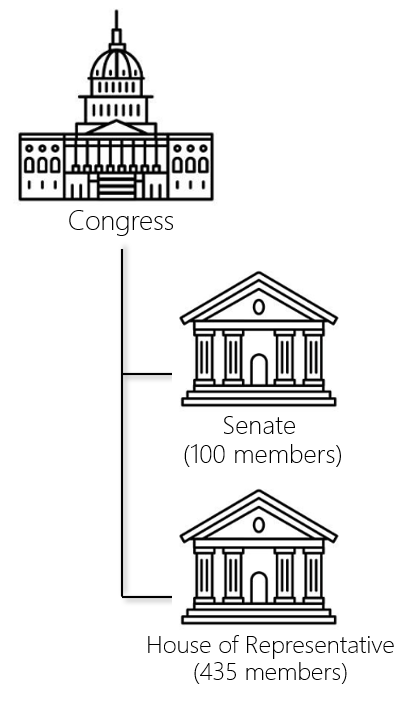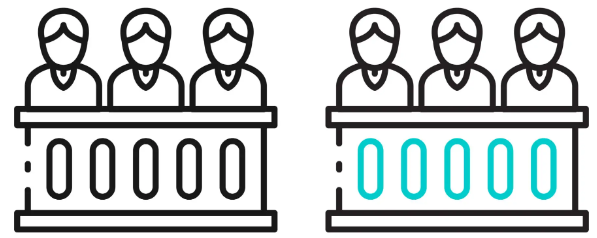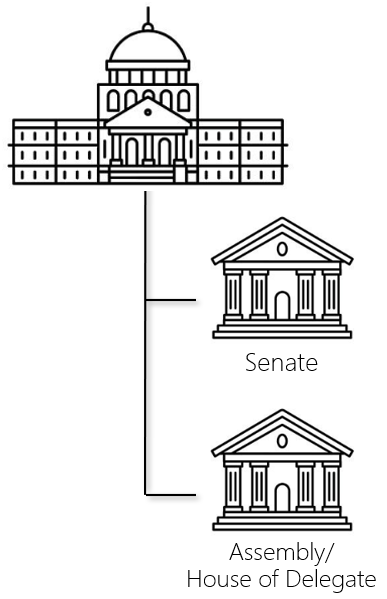United States Government#
The United States Government has three branches: executive, legislative, and judicial. Melissa maintains two of these: the Executive and Legislative chambers, which include; elected and appointed officials from the national government, as well as state and local level governments.
National level#
Executive branch#

The head of the U.S. executive branch is the President, who resides in the White House. The Vice President assist the President, the executive office manages day-to-day operations. The President also appoints the heads of the 15 executive departments, which make up the Cabinet, to oversee specific areas like defense or education. These appointments require confirmation by the Senate.
Legislative branch#

Lawmaking at the Federal Level in the United States falls to Congress, a bicameral legislature comprised of two chambers:
The Senate, the upper house, has 100 members with two representatives from each state regardless of population size.
The House of Representatives, the lower house, has 435 members with the number of representatives apportioned among the states based on their total population.
Together, these two chambers work to pass laws, approve treaties, and confirm presidential appointments.
Committee#

A subgroup of the House or Senate established for the purpose of considering legislation, conducting hearings and investigations, or carrying out other assignments as instructed by its respective Chamber.
State level#
Executive branch#

At the state level, the Executive branch is headed by the governor, who is elected directly by the populace. Along with lieutenant governor, there are a varied number of executive roles per state (such as the attorney general, secretary of state, auditor, commissioners, etc.) who could be appointed by the Governor or elected by the populace.
Legislative branch#

State legislative branches mimic those at the Federal level, and also consist of upper and lower chambers; often a Senate, and a House of Representatives, House of Delegates, or Assembly. These bodies have the power to make laws on topics not granted to the federal government. The structure of state governments varies significantly. For example, Nebraska has a unicameral legislative body (1 chamber instead of two). The exact names, dates, term lengths, term limits, electoral systems, number of members and other details are determined by an individual state’s laws.
Local level#

Local level governments in the United States also have executive and legislative bodies. Though these too vary greatly from region to region, they generally, local government two tiers: counties and municipalities. There are a variety of legislative structures used in local governments, including boards of county commissioners, and city and town councils.
Election Events#
We log and track federal, midterm, primary, general, municipal, special, and runoff elections.
Level |
Chamber |
Term lengths |
|---|---|---|
National |
Presidential |
4 years |
Senate |
6 years |
|
House of Representative |
2 years |
|
State |
Governor |
4 years * |
Senate |
4 years * * |
|
Assembly/ House of Delegates |
Varies |
|
Local |
Mayor |
Varies |
Board of Supervisors/ City Councils |
Varies |
* with exception of Vermont and New Hampshire
* * with exception of Nebraska, Vermont and New Hampshire